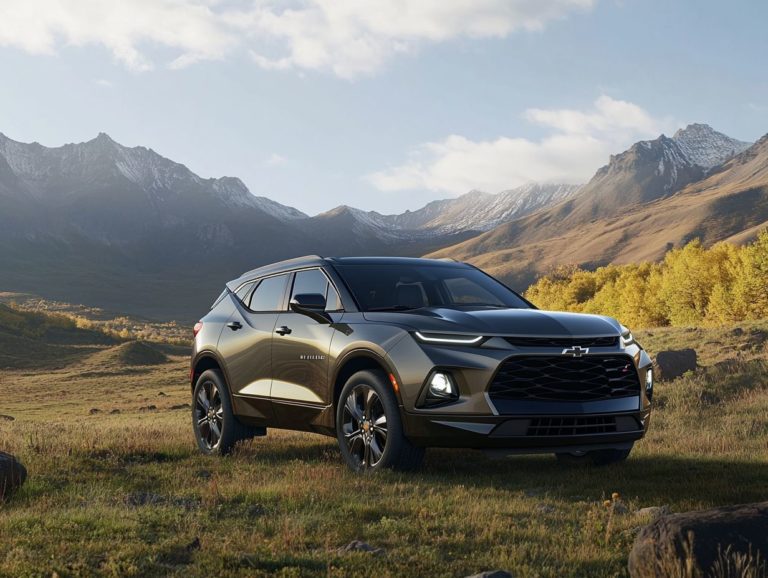Safety Features You Should Look for in an SUV
When it comes to SUVs, safety features are crucial. They safeguard both you and your loved ones.
This article delves into the many safety features you should consider. These range from essential passive elements like seatbelts and airbags to cutting-edge technologies such as lane departure warning and automatic emergency braking.
You will find guidance on selecting the right SUV that aligns with your safety needs. Elevate your decision-making and make a secure choice for your next vehicle!
Contents
- Key Takeaways:
- Passive Safety Features
- Active Safety Features
- Advanced Safety Features
- Choosing the Right SUV with the Best Safety Features
- Frequently Asked Questions
- What are some important safety features you should look for in an SUV?
- Why are airbags vital in an SUV?
- What is the purpose of anti-lock brakes in an SUV?
- How does electronic stability control improve safety in an SUV?
- What s the benefit of blind spot monitoring in an SUV?
- How does forward collision warning enhance safety in an SUV?
Key Takeaways:
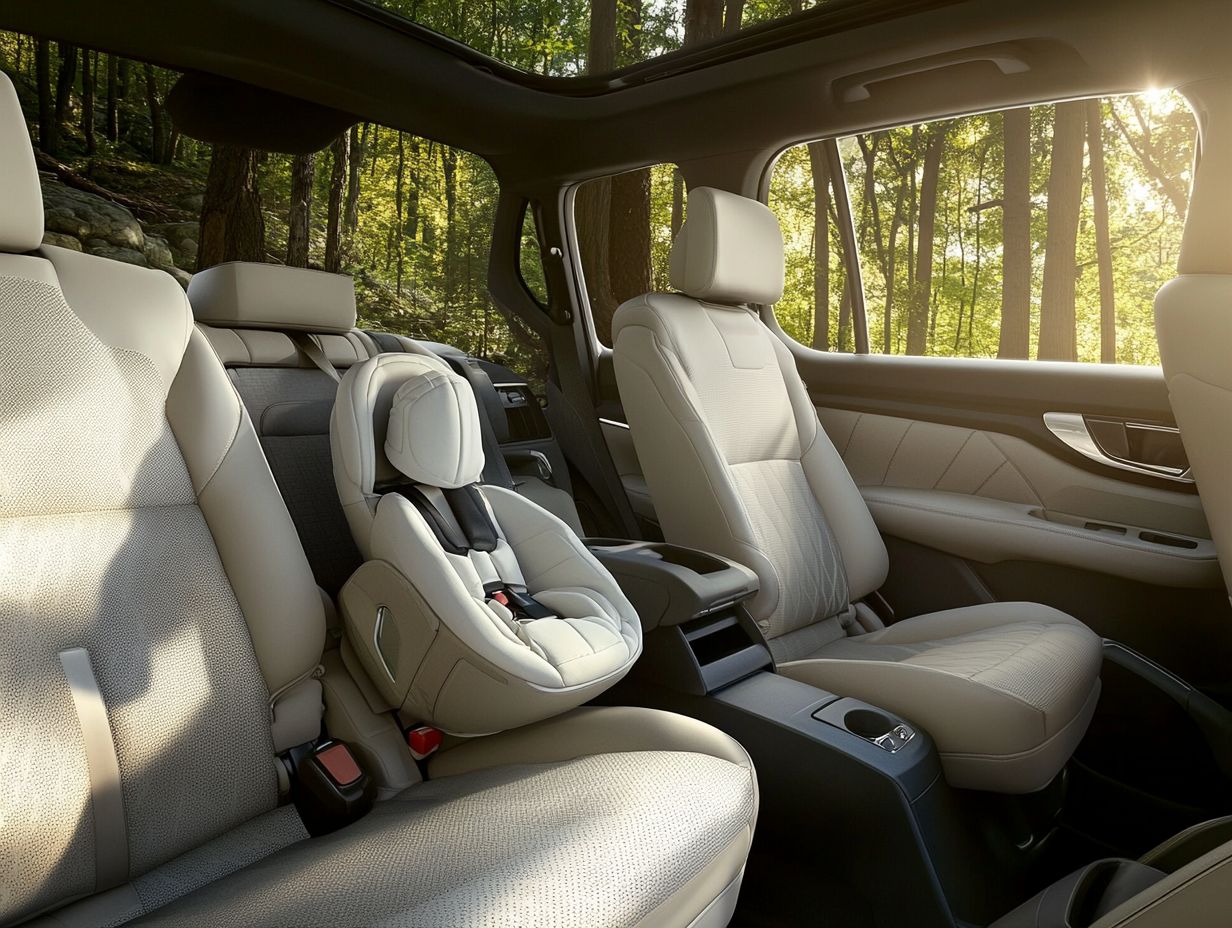
- Safety should be a top priority when selecting an SUV.
- Consider passive, active, and advanced safety features.
- Research and compare different SUVs for the best safety features tailored to your budget and needs.
Why Safety Features Matter for SUVs
Safety features are essential in enhancing your driving experience in an SUV. Understanding what to look for when buying an SUV ensures your wellbeing and contributes to overall road safety.
As SUVs gain popularity, it s increasingly important to understand the various safety technologies available to you. Advanced systems like collision warning, adaptive cruise control, and electronic stability control (ESC) have changed how we perceive safety.
Improved crash test ratings and safety alerts instill confidence in your vehicle choices. Among these, understanding the top 5 off-road features in SUVs can enhance safety, as these features are a top priority in the SUV market.
This confidence comes from a blend of passive and active safety measures designed to protect everyone on the road. For instance, airbags deploy instantly during a collision, offering crucial cushioning for you and your passengers.
Anti-lock braking systems prevent wheel lock-up during sudden stops, enhancing vehicle control in emergencies. Secure child seat anchors ensure younger passengers are safe.
Each of these technologies not only reduces the risk of accidents but also boosts convenience. You can focus on the road ahead, knowing that modern advancements in safety are working hard to keep you safe.
In a time when safety ratings can heavily influence purchasing decisions, these features ultimately save lives and foster peace for families on the move.
Passive Safety Features
Passive safety features are designed to reduce injuries during accidents. They do this by ensuring protection through structural integrity and effective restraint systems.
In SUVs, you’ll find strong reinforced structures that absorb and dissipate crash forces. For more information, check out the safety ratings of popular SUVs and understand how essential elements like seat belts and airbags work together to protect occupants.
The incorporation of ISOFIX child seat anchors enhances safety for younger passengers. This ensures they are securely fastened and well-protected in the event of an impact.
Start your research today to find the safest SUV for your family!
Seatbelts and Airbags
Seat belts and airbags are the backbone of passive safety features in SUVs, working together to lower the risk of injury during a collision. Seat belts act as your first line of defense, keeping you securely in place and preventing excessive movement. Airbags deploy on impact, cushioning and protecting vital areas of your body. This teamwork is crucial for improving crash safety and ensuring modern vehicle designs include effective safety measures.
Different types of seat belts, such as three-point belts and lap belts, provide varying degrees of support tailored to specific situations, enhancing their overall effectiveness. Airbags come in various forms front, side, and curtain each specifically designed to prevent certain injuries during crashes. Their deployment mechanisms rely on sensors that detect the severity of a collision, allowing for instantaneous inflation to provide you with crucial protection.
According to the National Highway Traffic Safety Administration (NHTSA), seat belts can reduce the risk of fatal injury by an impressive 45%. This highlights their importance alongside airbags in real-world accident scenarios. Studies show that vehicles equipped with both safety features experience a significant decrease in occupant fatalities, reinforcing the effectiveness of these safety systems in keeping you safe on the road.
Crash Test Ratings and Safety Standards
Crash test ratings are vital indicators of an SUV’s safety performance, providing essential insights into vehicle safety. These evaluations consist of a series of standardized tests designed to mimic real-world collision scenarios.
Organizations like GNCAP use these tests to evaluate how vehicles respond to various impact types. One key test is the frontal offset crash test, which simulates a head-on collision. The side impact test assesses the vehicle’s protection against side collisions.
Each test evaluates the vehicle’s structural integrity and the effectiveness of safety features such as airbags and seat belts. GNCAP’s findings shape consumer choices and encourage manufacturers to prioritize safety innovations to improve their ratings and attract safety-conscious buyers.
Active Safety Features
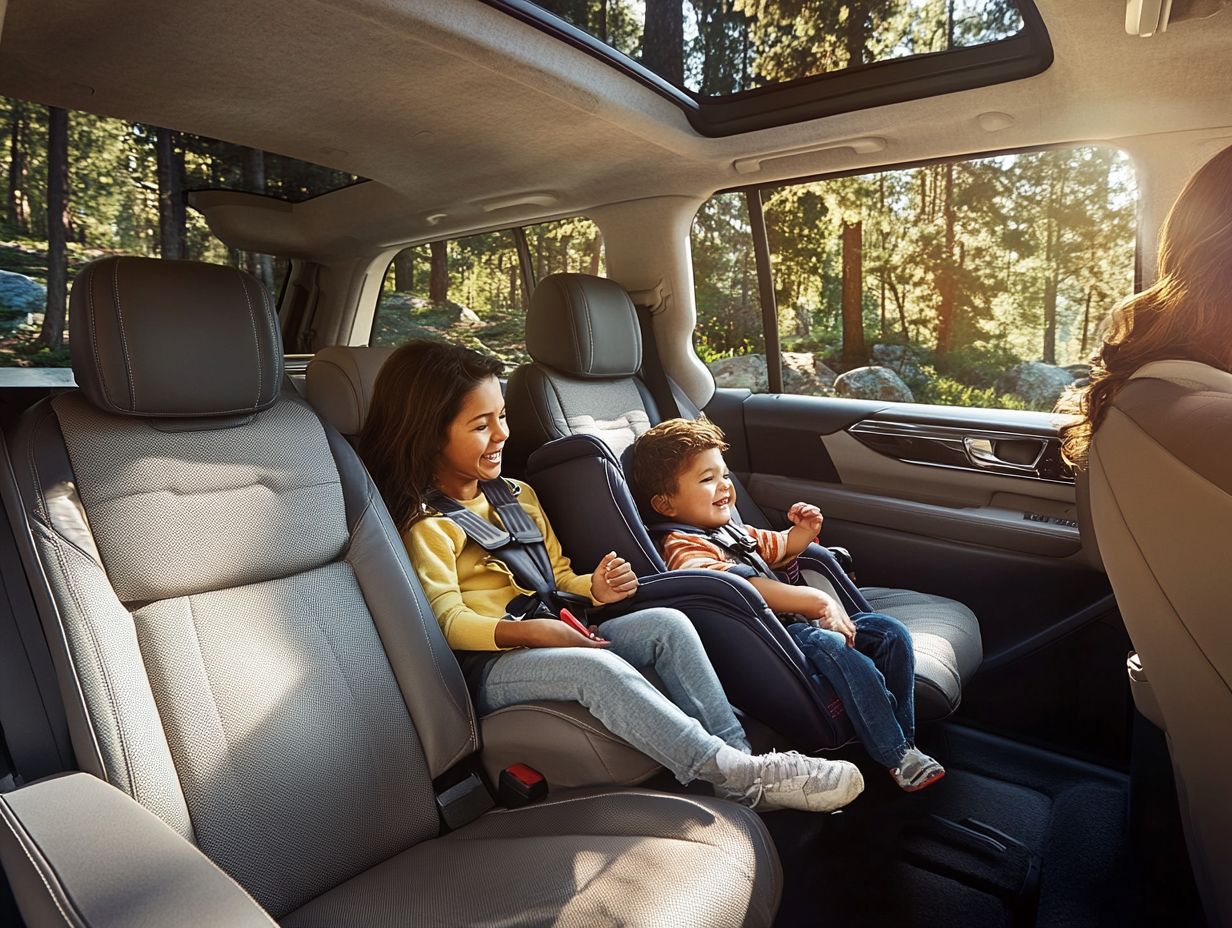
Experience the thrill of driving with features like electronic stability control (ESC), which helps maintain control during challenging driving conditions. Additionally, exploring the top electric vehicle safety features to consider can help ensure that collision avoidance systems detect potential dangers and help prevent accidents before they happen, significantly enhancing the safety of your SUV.
The seamless use of these intelligent systems not only boosts road safety but also elevates your driving experience, giving you a strong sense of security behind the wheel.
Electronic Stability Control
Electronic Stability Control (ESC) is a crucial feature in modern SUVs that enhances your driving experience, especially under challenging road conditions. This advanced system detects any loss of steering control and automatically applies brakes to individual wheels, helping you maintain command over your vehicle during maneuvers that may cause skidding or loss of traction.
With ESC, the risk of rollover accidents is significantly reduced, making it vital for the safety of everyone on board. In various scenarios like sudden turns or slippery roads the benefits of ESC are clear, allowing you to navigate with confidence.
Statistics show that vehicles equipped with this technology experience roughly 25% fewer crashes compared to those without it. This benefit is especially important in areas with harsh weather and challenging terrain, where effective vehicle control can mean the difference between a safe journey and a dangerous situation.
By integrating technology and safety, ESC enhances your overall driving experience, ensuring that each trip is as secure as it is enjoyable.
Stay safe and make an informed choice for your next SUV purchase!
Blind Spot Monitoring
Blind Spot Monitoring (BSM) is a top safety technology that alerts you to vehicles in your blind spots. Using sensors, it detects nearby objects and issues visual or auditory warnings, greatly reducing the risk of collisions during lane changes.
In today’s busy urban environments, BSM is a must-have for SUV safety systems. It employs radar or cameras to adapt to various driving conditions, ensuring effective responses to changing situations.
Many users report feeling safer and more confident, especially in high-traffic areas. Statistics show that BSM-equipped vehicles can reduce lane change-related accidents by up to 14%.
When combined with other safety technologies, BSM enhances overall effectiveness, making it a crucial feature for road safety and reducing risks associated with driver distractions.
Collision Avoidance Systems
Collision avoidance systems are at the forefront of automotive safety technology. They expertly detect potential collisions and take proactive steps to avoid them. By using a blend of radar, cameras, and advanced algorithms, these systems identify obstacles and deliver timely safety alerts directly to you.
In critical moments, they can engage automatic or emergency braking, helping to mitigate or completely avoid collisions. This highlights the remarkable strides made in vehicle safety.
This innovative technology not only enhances your awareness while driving but also significantly reduces the likelihood of accidents. Research indicates that vehicles with forward collision warning systems can reduce rear-end crashes by as much as 27%.
The systems continuously monitor the road ahead, analyzing the distance, speed, and trajectory of vehicles. When danger is detected, you receive visual and auditory alerts, giving you the opportunity to react. In some cases, automatic emergency braking is activated to prevent impact.
Studies show that these systems are quickly becoming standard in modern vehicles, promising enhanced safety and boosting your confidence on the road.
Advanced Safety Features
Advanced safety features are the top automotive technology, seamlessly merging convenience with heightened safety measures to enhance your driving experience.
One standout feature is adaptive cruise control, which automatically adjusts your vehicle s speed based on surrounding traffic, fostering a more relaxed and enjoyable drive.
Similarly, lane departure warning systems alert you when you unintentionally drift from your lane, significantly enhancing road safety and your comfort during long journeys.
Adaptive Cruise Control
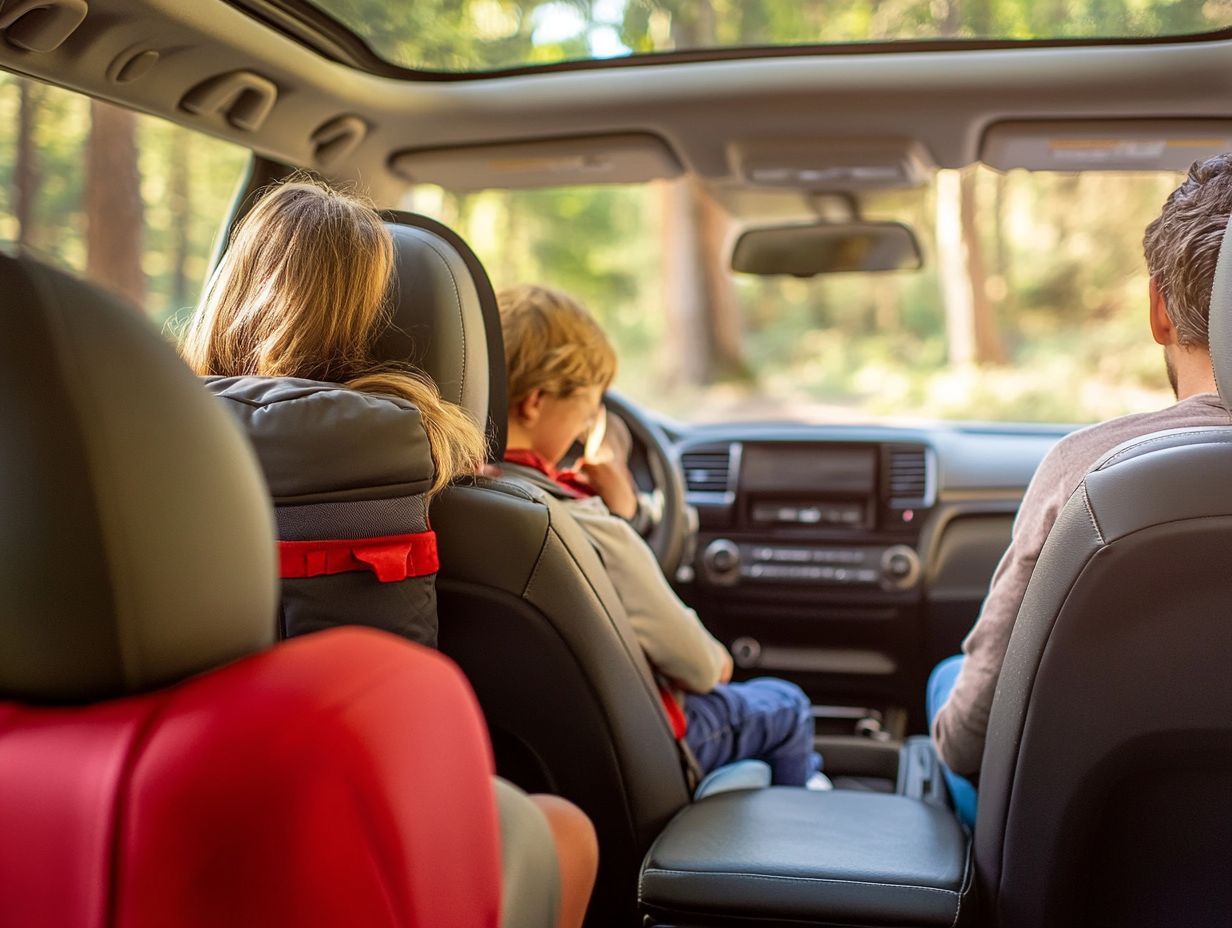
Adaptive cruise control is a game-changing feature that adjusts your car s speed to maintain a safe distance from the vehicle in front. This technology uses radar and camera systems to monitor traffic, allowing you to relax while ensuring safety on highways and during long trips.
This feature enhances your driving pleasure and plays a significant role in promoting overall road safety.
Research reveals that vehicles equipped with adaptive cruise control can reduce the risk of rear-end collisions by about 40%, highlighting its importance in accident prevention. Studies also show that drivers experience markedly less fatigue on long journeys when using this system, easing the mental burden of constant speed adjustments.
By responding effortlessly to changes in traffic, adaptive cruise control encourages safer driving habits, creating a more secure environment for everyone. As advanced safety technologies become more common, this feature stands out as a key advancement toward safer and more enjoyable driving experiences.
Lane Departure Warning
Lane departure warning systems boost your driving safety by alerting you if you drift out of your lane. Using advanced cameras, these systems give visual or sound alerts, encouraging you to correct your path.
In various scenarios, such as highway driving where fatigue can easily creep in or during inclement weather when visibility diminishes, these systems become essential for your safety. Studies reveal that vehicles equipped with lane departure warnings have experienced a remarkable reduction in lane departure incidents by up to 50%. For instance, in Sweden, where these systems are gaining traction, there has been a notable decline in road accidents attributed to lane drift.
This highlights not only the effectiveness of these systems in facilitating immediate driver responses, but also their role in cultivating a culture of safety on the roads, ultimately leading to a significant decrease in traffic-related fatalities.
Automatic Emergency Braking
Automatic emergency braking (AEB) is a vital safety feature. It applies the brakes automatically if a possible collision is detected. By leveraging a sophisticated mix of sensors and cameras, AEB systems assess situations and respond faster than any human driver can, significantly enhancing your vehicle’s safety.
This advanced feature is particularly invaluable in urban settings, where sudden stops may be necessary to dodge unexpected obstacles. Beyond city streets, AEB technology is also making its mark on highways, adeptly detecting merging vehicles and sudden shifts in traffic flow.
Statistics indicate that vehicles equipped with AEB experience up to a 40% reduction in rear-end collisions, showcasing the impressive effectiveness of these collision avoidance systems. Get ready for these systems to revolutionize road safety!
As manufacturers increasingly integrate AEB into their offerings, the adoption of AEB not only heightens your awareness as a driver but also marks a significant stride toward fully autonomous driving solutions.
Choosing the Right SUV with the Best Safety Features
Selecting the ideal SUV with top-tier safety features requires thoughtful consideration of several key factors, including safety ratings and the latest innovations on the market. As you navigate the landscape of vehicle safety, it’s essential to understand the importance of technologies like rear parking sensors, tire pressure monitoring, and driver assistance systems. For more insights, check out what to consider when buying a new SUV.
Think about your driving habits to identify which features suit your needs. This reflection ultimately enhances your overall driving experience and safety on the road.
Factors to Consider and Resources for Research
When selecting an SUV, it’s vital to consider factors that impact safety and overall performance, such as safety ratings and the availability of advanced safety technologies. Resources like consumer reports, alongside guides on the top 10 features for a safe family car, provide valuable insights into the safety features of various models, enabling you to make well-informed decisions.
For instance, if you’re a family person, you likely prioritize models with higher crash test scores. You can find this information through reputable sources like the National Highway Traffic Safety Administration (NHTSA) and the Insurance Institute for Highway Safety (IIHS). These organizations deliver comprehensive evaluations covering everything from collision avoidance features to the effectiveness of seat belts and airbags.
Additionally, considering your typical driving conditions, be it urban settings or off-road adventures, can greatly influence your choice of SUV. Advanced technology features such as adaptive cruise control, lane-keeping assist, and automatic emergency braking are crucial for enhancing safety. To learn more about these systems, check out the top safety features in luxury vehicles, as they can vary widely between manufacturers.
Understanding these elements can lead to a more fulfilling ownership experience, ultimately making your driving journey safer and more enjoyable.
Frequently Asked Questions
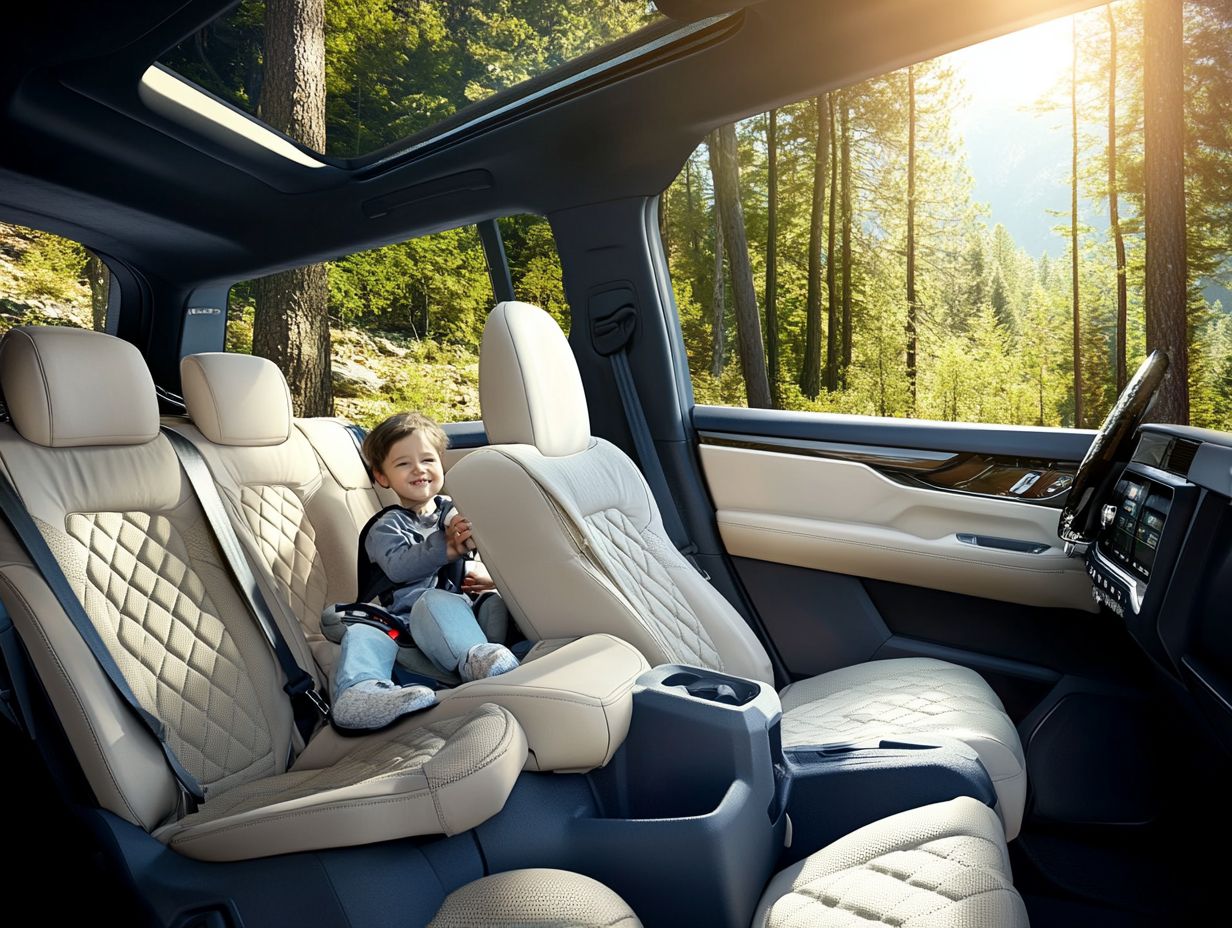
What are some important safety features you should look for in an SUV?
When buying an SUV, look for safety features to look for in family cars like airbags, anti-lock brakes, electronic stability control, blind spot monitoring, and forward collision warning.
Why are airbags vital in an SUV?
Airbags offer crucial protection during crashes. They cushion impacts, reducing the risk of serious injuries for everyone inside.
What is the purpose of anti-lock brakes in an SUV?
Anti-lock brakes, or ABS, stop the wheels from locking during sudden braking. This helps you maintain control and avoids skidding.
How does electronic stability control improve safety in an SUV?
Electronic stability control (ESC) keeps the vehicle steady during sudden turns or on slippery roads. It uses sensors to help prevent accidents.
What s the benefit of blind spot monitoring in an SUV?
Blind spot monitoring detects vehicles in your blind spots. This system helps you change lanes or merge safely.
How does forward collision warning enhance safety in an SUV?
Forward collision warning checks the distance to the car in front. If it spots a potential collision, it quickly alerts the driver to act fast.


